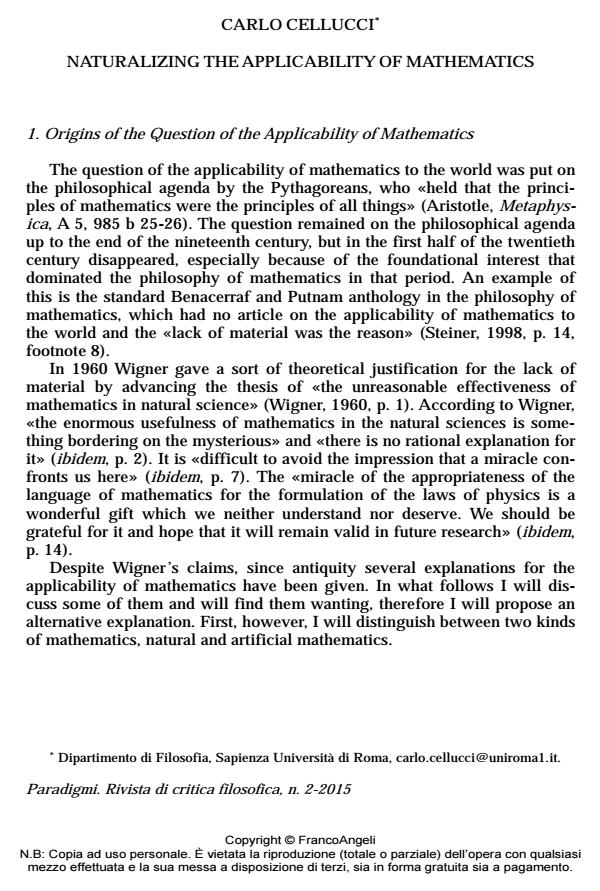Naturalizing the Applicability of Mathematics
Journal title PARADIGMI
Author/s Carlo Cellucci
Publishing Year 2015 Issue 2015/2
Language Italian Pages 20 P. 25-44 File size 90 KB
DOI 10.3280/PARA2015-002004
DOI is like a bar code for intellectual property: to have more infomation
click here
Below, you can see the article first page
If you want to buy this article in PDF format, you can do it, following the instructions to buy download credits

FrancoAngeli is member of Publishers International Linking Association, Inc (PILA), a not-for-profit association which run the CrossRef service enabling links to and from online scholarly content.
In order to deal with the question of the applicability of mathematics to the world, this article distinguishes between natural mathematics, that is, innate mathematics, and artificial mathematics, that is, mathematics as a discipline. It argues that natural mathematics is applicable to the world because the systems of core knowledge upon which it is based, being a result of biological evolution, fit in certain mathematical properties of the world. On the other hand, the basis for the applicability of artificial mathematics to the world is Galileo’s philosophical revolution, the decision to confine physics to the study of some properties of the world mathematical in character. But, like the applicability of natural mathematics, also the applicability of artificial mathematics depends on our makeup, and hence ultimately on biological evolution.
Keywords: Applicability, conceptualizations, evolution, mathematics, simplicity
Carlo Cellucci, Naturalizing the Applicability of Mathematics in "PARADIGMI" 2/2015, pp 25-44, DOI: 10.3280/PARA2015-002004